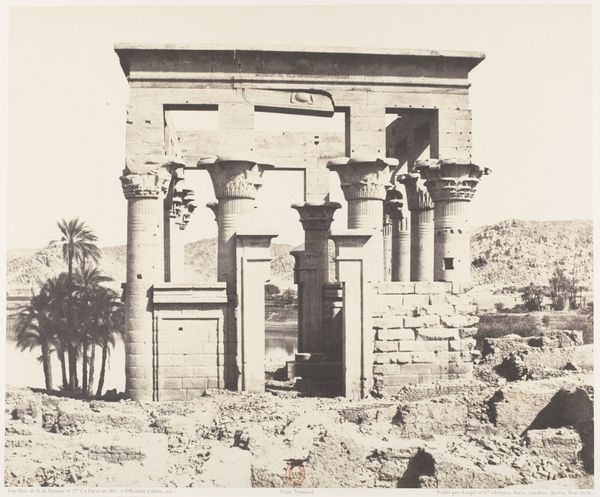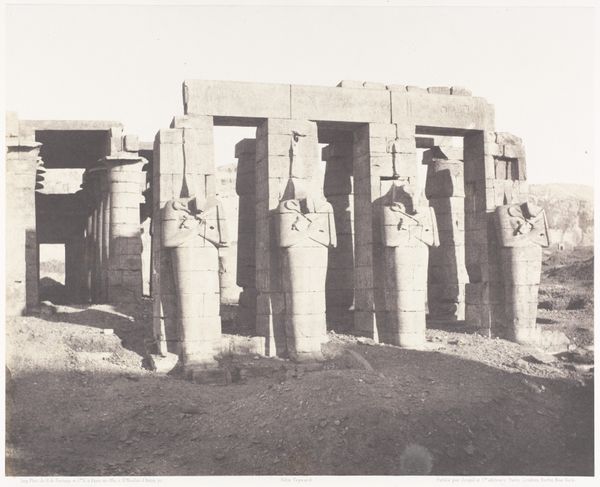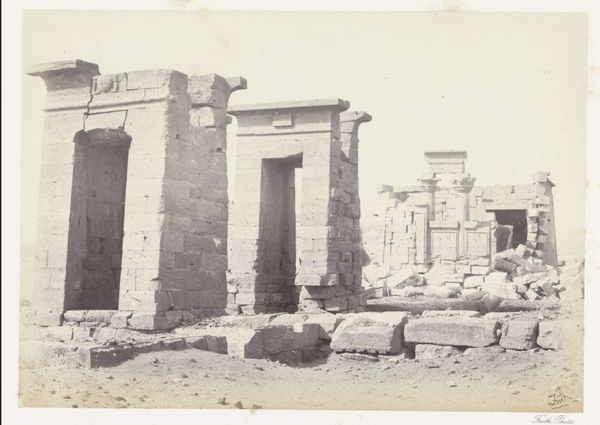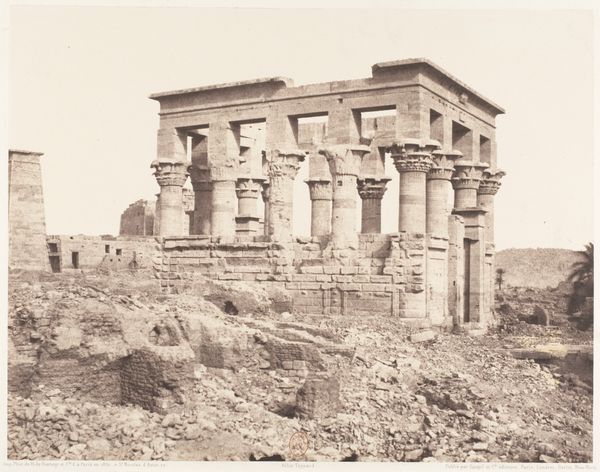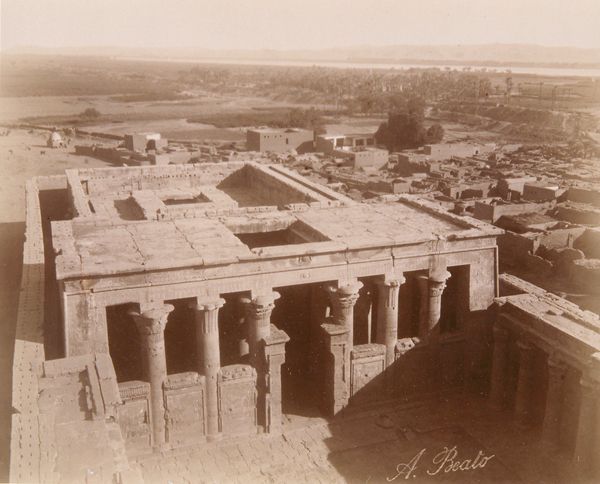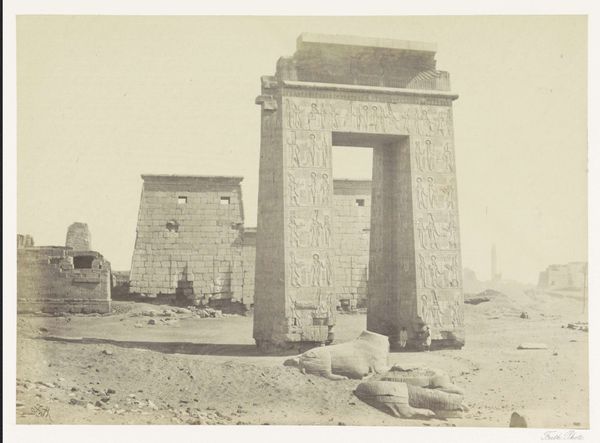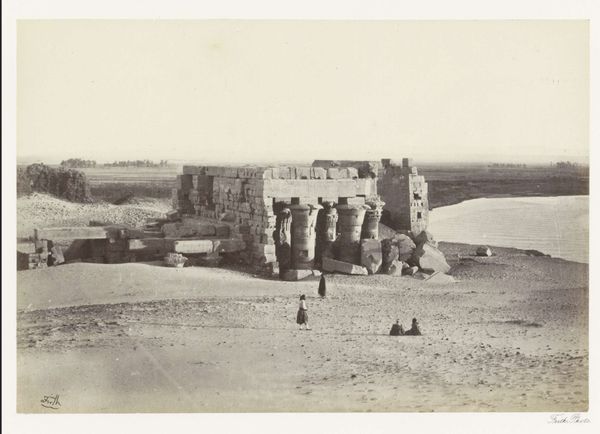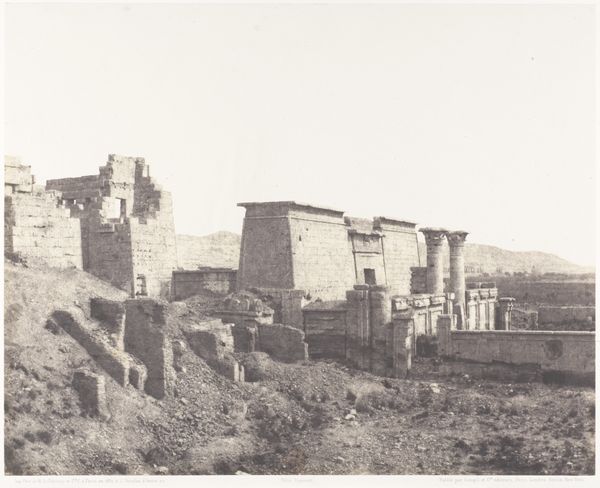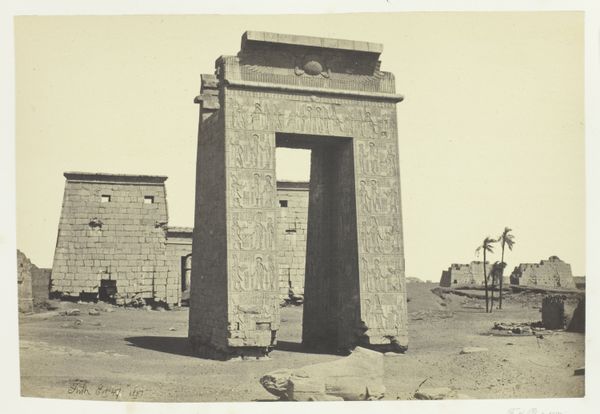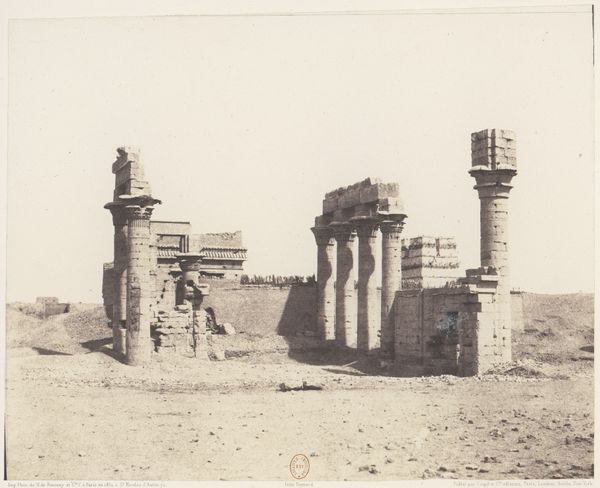
Karnak (Thèbes), Vue Générale des Ruines Prise du Point B 1851 - 1852
0:00
0:00
photography, architecture
#
landscape
#
outdoor photograph
#
outdoor photography
#
photography
#
ancient-mediterranean
#
monochrome photography
#
architecture
#
monochrome
Dimensions: 23.6 x 30.4 cm. (9 5/16 x 12 in.)
Copyright: Public Domain
Curator: This haunting landscape is a photograph by Félix Teynard, created between 1851 and 1852. The piece is entitled "Karnak (Thèbes), Vue Générale des Ruines Prise du Point B." It captures a general view of the ruins at Karnak in Thebes. Editor: Wow, instantly, I feel transported. It's almost bleached, this scene, incredibly desolate, and utterly mesmerizing. It has this quiet intensity that draws you in close, doesn't it? Like a half-forgotten dream. Curator: Absolutely. Teynard’s work here, part of an extensive project documenting Egypt, provides invaluable insight into 19th-century archaeological and colonial contexts. This photograph allows us to reflect on the power dynamics inherent in the act of documenting and claiming ancient sites. It’s very much an act of asserting influence and ownership, especially as Egypt was of interest to different imperial powers at this time. Editor: It also makes me consider our own relationship with time, and ruins, with memory. What's left when empires crumble? These stone giants... they stand so proud but time marches on. Is Teynard implying this? The composition, with its stark sky, just accentuates that impermanence. Curator: Precisely! Teynard’s technical choices also speak volumes. The use of early photographic processes and his compositional strategies emphasize both the grandeur and the decay, highlighting the complexities of cultural heritage and preservation efforts of the period. Note the scale; even these mammoth structures seem small under that immense sky. Editor: The foreground’s almost prickly—there's these clumps of vegetation which is quite arresting, actually—bringing a bit of earthly groundedness, a reminder that life, albeit stark, persists amidst all this faded glory. I see such drama in the contrast. I find I'm thinking less about the academic implications and more about pure wonder. What secrets do these stones hold? Curator: That sense of wonder is exactly why this image continues to resonate. And if you listen closely, maybe the stones will share their secrets, if we contextualize them within a history of exploitation. Teynard offers us the means. Editor: Oh yes! Thank you for guiding me.
Comments
No comments
Be the first to comment and join the conversation on the ultimate creative platform.
